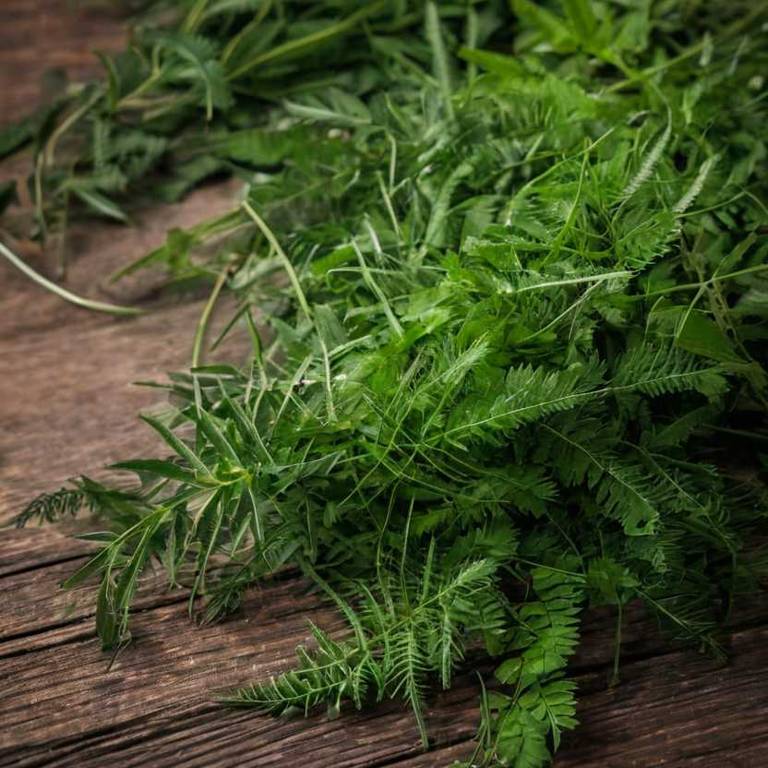By Leen Randell
Updated: Jul 20, 2024
10 Medicinal Constituents Of Mimosa Pudica (Sensitive Plant)

Mimosa pudica has active constituents such as flavonoids, glycosides, and saponins.
These constituents are responsible for its medicinal properties, including anti-inflammatory, antioxidant, and antispasmodic effects. The flavonoids in Mimosa pudica may help alleviate anxiety and stress, while its glycosides could improve sleep quality.
By reducing inflammation and promoting relaxation, Mimosa pudica can improve overall well-being and enhance the quality of life for individuals suffering from anxiety disorders or insomnia.
This article explains in details the 10 best active constituents of Mimosa pudica.
1. Tannins
Mimosa pudica tannins is a type of polyphenolic compound found in its leaves and stems.
These compounds are responsible for imparting astringent properties to the plant, making it unpalatable to many animals. Tannins in Mimosa pudica have been shown to exhibit antioxidant, anti-inflammatory, and antimicrobial activities, which may contribute to their traditional uses in folk medicine.
Additionally, tannins play a role in the plant's defense against pathogens and insects, helping it survive in its environment.
2. Flavonoids
Mimosa pudica flavonoids is a group of bioactive compounds found in its leaves and stems.
These flavonoids, including kaempferol, quercetin, and luteolin, have been shown to possess various biological activities, such as antioxidant, anti-inflammatory, and antimicrobial properties.
They may also play a role in the plant's response to environmental stresses, making Mimosa pudica a valuable subject for further research into its potential uses in medicine and agriculture.
3. Saponins
Mimosa pudica saponins is a unique compound found in its leaves and stems.
These saponins have been extensively studied for their potential medicinal properties, including anti-inflammatory, antioxidant, and antimicrobial activities.
The saponins of M. pudica have been shown to inhibit the growth of certain pathogens and reduce inflammation, making them a promising area of research in the development of novel therapeutic agents.
4. Glycosides
Mimosa pudica glycosides is a type of bioactive compound found in its leaves and stems.
These glycosides have been shown to exhibit various physiological activities, including anti-inflammatory, antioxidant, and antimicrobial properties. They have also been reported to possess potential therapeutic applications, such as treating cardiovascular diseases, cancer, and neurodegenerative disorders.
Additionally, mimosa pudica glycosides have been used in traditional medicine for centuries, particularly in Ayurvedic and folk remedies.
5. Alkaloids
Mimosa pudica alkaloids is a group of bioactive compounds found in its leaves and stems.
These alkaloids, including mimosine and mimosinol, have been shown to possess various biological activities such as anti-inflammatory, antimicrobial, and antioxidant properties.
They have also been reported to exhibit cytotoxicity against certain cancer cell lines, making them a potential source of new therapeutic agents for human diseases.
6. Sterols
Mimosa pudica sterols is a type of phytochemical compound extracted from the leaves and stems of the M. pudica plant.
These sterols have been found to possess various biological activities, including anti-inflammatory, antioxidant, and antimicrobial properties.
They have also been shown to exhibit cytotoxic effects against certain cancer cell lines, making them a potential target for the development of new therapeutic agents.
7. Phenolic acids
Mimosa pudica phenolic acids is a class of bioactive compounds that have been identified in its leaves and stems.
These acids have been shown to exhibit antioxidant, anti-inflammatory, and antimicrobial properties, making them potential candidates for the treatment of various diseases.
They have also been reported to possess antidiabetic and anticancer activities, highlighting their medicinal significance.
8. Anthraquinones
Mimosa pudica anthraquinones is a group of bioactive compounds found in its leaves and stems.
These compounds have been shown to possess various pharmacological activities, including anti-inflammatory, antioxidant, and antimicrobial properties.
The anthraquinones isolated from Mimosa pudica have also been found to exhibit cytotoxicity against certain cancer cell lines, suggesting potential as a natural chemotherapeutic agent.
9. Terpenes
Mimosa pudica terpenes is a unique blend of aromatic compounds found in the leaves and stems of this herb.
These terpenes have been shown to possess potential medicinal properties, including anti-inflammatory and antioxidant effects.
The specific composition of Mimosa pudica terpenes varies depending on factors such as climate and soil conditions, but it typically includes a mixture of monoterpene hydrocarbons, sesquiterpene lactones, and other bioactive compounds.
10. Quercetin
Mimosa pudica quercetin is a bioactive compound extracted from its leaves.
Quercetin has been extensively studied for its potential health benefits, exhibiting anti-inflammatory and antioxidant properties. It has been shown to inhibit the growth of cancer cells, reduce oxidative stress, and improve cardiovascular health. Additionally, quercetin may help alleviate symptoms of allergies, asthma, and other respiratory disorders.
Its bioactive profile makes it a promising compound in the development of novel therapeutics.